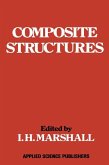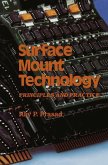The design and assessment of modern high temperature plant demands an understanding of the creep and rupture behaviour of materials under multi axial stress states. Examples include thread roots in steam turbine casing bolts, branch connections in nuclear pressure vessels and blade root fixings in gas or steam turbine rotors. At one extreme the simple notch weakening/notch strengthening characterization of the material by circumferentially vee-notched uniaxial rupture tests, as specified in many national standards, may be sufficient. These were originally intended to model thread roots and their conservatism is such that they frequently are considered adequate for design purposes. At the other extreme full size or model component tests may be employed to determine the safety margins built into design codes. This latter approach is most commonly used for internally pressurized components, particularly where welds are involved. However, such tests are extremely expensive and the use of modern stress analysis techniques combined with a detailed knowledge of multiaxial properties offers a more economic alternative. Design codes, by their nature, must ensure conservatism and are based on a material's minimum specified properties. In the case of high temperature components the extension of life beyond the nominal design figure, say from 100000 to 200000 h, offers very significant economic benefits. However, this may require a more detailed understanding of the multiaxial behaviour of a specific material than was available at the design stage.








